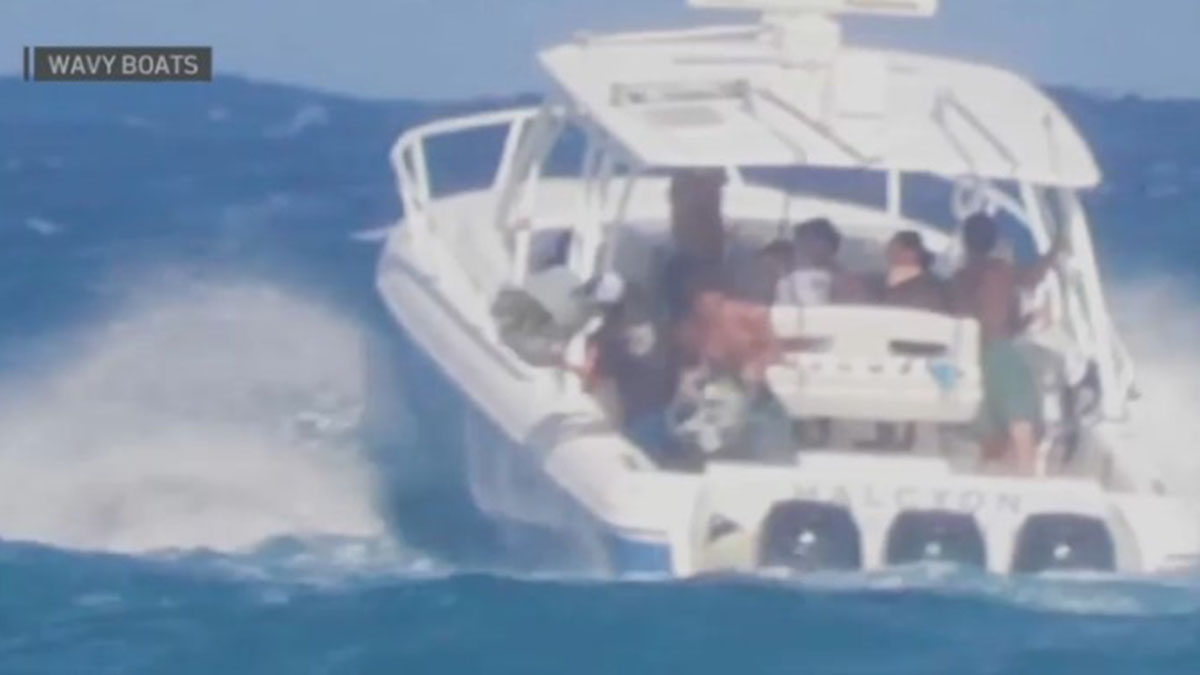A federal rule that protects highly endangered North Atlantic right whales by imposing a speed limit on large ships has been made permanent.
First put into effect in 2008 by the National Oceanic and Atmospheric Administration, the regulation requires ships 65-feet-long or more to travel at speeds of 10 knots or less seasonally in areas where right whales feed and reproduce, as well as along migratory routes in-between.
In the Savannah area, the speed limit is in effect from November through April each year. The area off the coast at the Georgia-Florida border is the only place where the whales are known to give birth.
Known as urban whales because they hug the coast in their migration from New England and Canadian waters to their calving grounds in the Southeast, right whales swim through major East Coast shipping lanes, making them highly vulnerable to ship collisions.
This season's migration is already underway. On Dec. 2 aerial surveyors spotted a 9-year-old whale nicknamed Caterpillar off Fernandina Beach, Fla. She's a good example of why the rule is needed. Down her right flank she sports a large scar where she was once struck by a ship's propeller, said Barb Zoodsma, a biologist with NOAA Fisheries.
Researchers worry that the lesion might prove fatal to her and her offspring if she gives birth.
"Already we've seen one female, "Lucky," whose scars broke open when she was pregnant," Zoodsma said. "They became infected and she died. The fetus ended up dying, too."
With only about 425 North Atlantic right whales in existence, these whales are among the most endangered in the world. The top threats are ship strikes and entanglements in fishing gear.
Local
Thirteen right whales died as a result of vessel strikes in the designated areas during an 18-month study period before the speed reduction rule went into effect. Since then the rule seems to be working as intended.
"Since the ship speed restrictions went into effect, no known fatal ship strikes of North Atlantic right whales have occurred in the management zones," said Mark Schaefer, deputy NOAA administrator and assistant secretary of commerce for conservation and management.
Instead of slowing down all ships, Georgia Ports Authority has long favored better tracking of right whales through acoustical detection of their underwater calls.
"For more than a decade, the GPA has worked closely with the environmental and regulatory community and shipping industry to develop pager and detection systems that can alert seafarers when right whales are in nearby waters," said Curtis Foltz, executive director of GPA. "As the second busiest port on the East Coast, it is critical that we continue to find ways to both service our customers and protect this endangered species."
But research so far has failed to show the animals' location could be pinpointed this way.
"There was an acoustic study done off the coast," Zoodsma said. "The problem they keep running into is mariners want exact locations of whales, but passive acoustics doesn't have the capacity to say right whales are at this x-y location based on vocalization. Harbor pilots down here say if you can only give us a five nautical mile radius we already know the right whales are here and that doesn't help. Plus when the calves are young, they just don't vocalize. It seems logical; they stay quiet so as not to attract predators. The mom and calf stay in physical contact."
The economic impact of the go-slow rule was projected to be $137.3 million annually. But five years into the rule, NOAA has revised the indirect and direct impact to $44.7 million annually.
In a move that advocacy agencies applaud, the new regulations do not include a "sunset" provision that would require the regulations to expire automatically at a future date.
"This is a huge victory for these endangered whales," said Sharon Young, marine issues field director for The Humane Society of the United States. "Since most of the collision-related deaths of right whales have involved females, the reduction in these deaths is a major step forward for this species that is struggling to recover."
Washington, D.C.-based Oceana argued the continued ship speed reduction was necessitated both by its proven success and by mounting threats from other sources, including chronic stress from underwater noise pollution and climate change, which is impacting the whales' foraging habitat.
But Tom Wright, who's active in the Savannah maritime community, would prefer a regular review of how the rule is working.
"There were other recommendations that they should be doing this based on sightings and not on calendars," he said. "Right now if you read about whales they're not where you think they are."
No whales were sighted off Georgia or Florida in November.
The rule requires vessels to travel at 10 knots or less during the seasons right whales are expected to be present in designated areas along the East Coast.
In the mid-Atlantic area, which includes Savannah, the 10-knot speed restrictions extend out to 20 nautical miles around major ports. NOAA Fisheries researchers report that approximately 80 percent of right whale sightings in the mid-Atlantic are within 20 nautical miles of shore. NOAA also established a program for temporary voluntary speed limits in other areas when an aggregation of three or more right whales is confirmed.
The rule allows vessels to exceed the limit if needed to ensure vessel safety.
The rule is part of NOAA's broader ship strike reduction efforts. Existing protective actions include surveying whale aggregation areas by aircraft, extensive mariner outreach programs and mandatory ship reporting systems that provide advisories and information on right whale locations to mariners.



